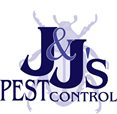Our Pest Control Services and things you should be aware of
It doesn’t matter what time of year it is, or what the whether conditions may be, a multitude of pests can surround your home or place of business on the outside, and then diligently begin to work on finding ways to get to the inside, whenever and wherever they get a chance. Pests like termites, bird lice, fleas, ants, cockroaches, spiders, rats, rodents and other vermin, just to name a few.
But now you can put a stop to these unwelcome pests with J&J’s Pest Control unique protection program.
You, like many of our domestic and commercial clients may not be aware of what a home or commercial perimeter pest treatment may involve. In simple terms, the exterior of your premises is either encircled, or surrounded, with an uninterrupted protective spray, that forms a barrier against unwanted pests.
We call it our complete pest control solution.
Some of the pests you should know about
Here is some information about some of household pests you may encounter:
Fleas
Finding out you have fleas in your home can be annoying to say the least. Fleas are a common problem to both humans and animals, and are known to transmit diseases. Click here for more information on fleas.
Spiders
Most spiders will only bite humans in self-defense, and few produce worse effects than a mosquito bite or bee-sting. Most of those with medically serious bites, such as recluse spiders and widow spiders, are shy and bite only when they feel threatened, although this can easily arise by accident. Click here for more information on spiders.
Rodents
The three major pest species of rodents are the Norway rat, the roof rat, and the house mouse. These rodents are known as commensal pests, which describes their ability to successfully cohabit with man. They are common in the main population centres in Australia and most countries throughout the world. According to the CSIRO about 10% of rodent species are significant pests in urban and agricultural environments. Click here for more information on rodents.
Cockroaches
Cockroaches are night-active insects and most live in damp places; most are omnivorous scavengers. They are worldwide in distribution. Cockroaches are a common pest in urban area, and frequently hide in kitchen areas so they can feed off food spills. Click here for more information on cockroaches.
Silverfish
Silverfish is a small, wingless insect typically measuring from a half to one inch. Its species is estimated to have existed for over 300 million years, originating in the Paleozoic Era. Click here for more information on Silverfish.
Bed Bugs
Bed bugs hide in cracks and crevices during the daytime such as in the folds of your mattress, hollow portions of your bed stand, behind wallpaper, under doors and in furniture. These insects use their beak-like mouths to pierce the skin, leaving you tossing and turning at night. Want to get rid of these vile pests once and for all? Click here for more information on bed bugs
or download PDF white paper
Birds
Bird control is important because pest birds can create health-related problems through their feces, including histoplasmosis, cryptococcosis, and psittacosis. Bird droppings may also cause damage to property and equipment. Click here for more information on birds.
Bees and Wasps
Bees and wasps cause painful stings by injecting venom through a dart–like needle in their tails. While bees leave their darts behind, stuck in your skin and subsequently die, wasps do not lose their dart, and do not die after the sting therefore are able to sting repeatedly. Click here for more information on bees and wasps or download PDF white paper.
Termites
Termites are sometimes referred to as ‘white ants’ because of their appearance – this information may assist in detecting and treating these pests. Click here for more information on termites.
Ants
Ants are found everywhere, from coastal mangroves to the highest peaks of the Australian Alps. And they are hardly shy. They happily live in our busiest cities and nest in our houses. Click here for more information on ants or download PDF white paper.
